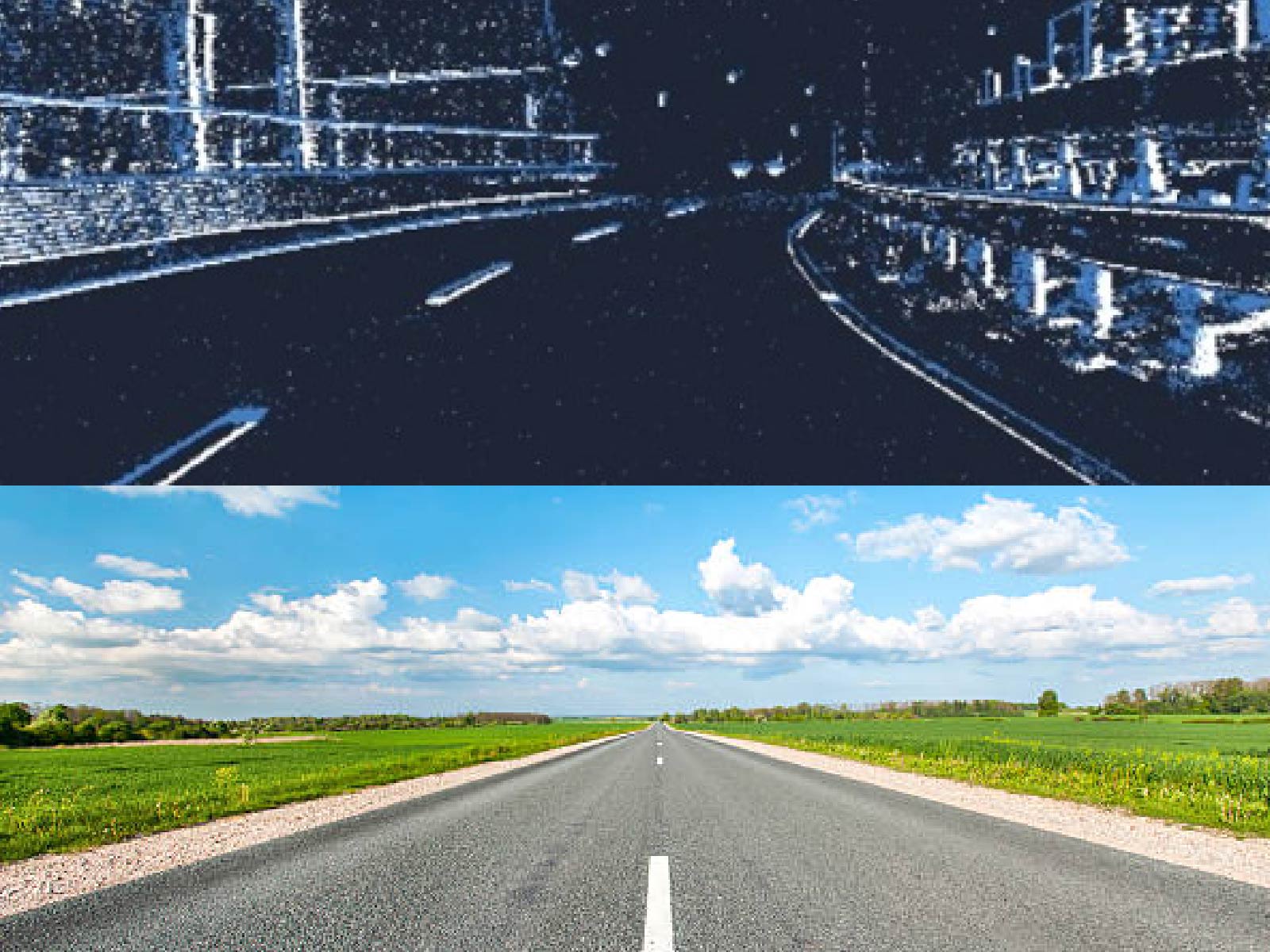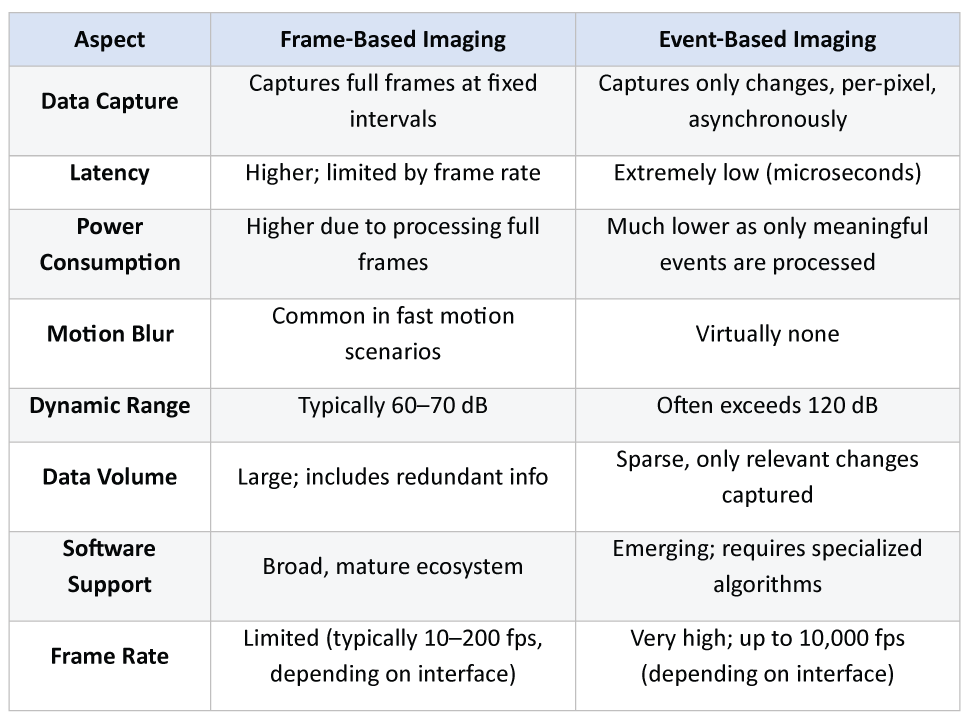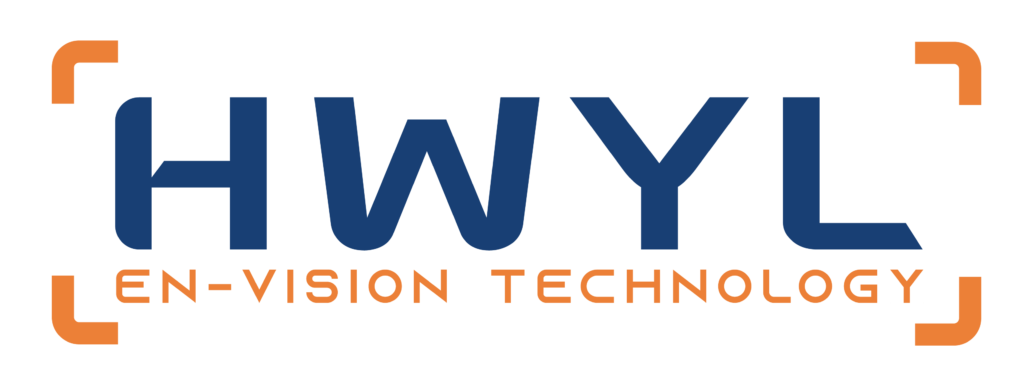
Frame-Based Imaging vs. Event-Based Imaging: What’s the Difference and Why It Matters
In the rapidly evolving world of computer vision and machine learning, imaging systems play a central role across industries, from robotics to medical devices. Traditional imaging has long relied on frame-based approaches, but a newer alternative, event-based imaging, is gaining traction due to its speed and efficiency. Understanding the differences between these two paradigms can help engineers and researchers select the right technology for their needs.
What is Frame-Based Imaging?
Frame-based imaging refers to the conventional method of capturing visual data in the form of full frames at regular intervals. Each frame captures the entire scene at once, regardless of whether any part of the image has changed since the last capture. This method is common in most digital cameras and uses CMOS or CCD sensors to generate colour or grayscale images.
This system is well-suited to static or predictable environments, where capturing the full image at consistent intervals provides enough information. However, it can be inefficient in dynamic scenes, where much of the data in each frame may remain unchanged. Additionally, frame-based systems can suffer from motion blur and latency, especially when objects are moving quickly or lighting conditions are challenging.
What is Event-Based Imaging?
Event-based imaging, on the other hand, takes a radically different approach. Rather than capturing entire frames at fixed intervals, each pixel in an event-based sensor works independently to detect changes in brightness. When a change exceeds a certain threshold, the pixel generates an “event” that is timestamped and processed immediately.
This approach is enabled by specialized hardware like Dynamic Vision Sensors (DVS), which are designed for ultra-fast, asynchronous data capture. Event-based imaging more closely mimics the way biological vision systems, like the human eye, process information, making it especially valuable in applications that demand real-time awareness and reaction.
Key Differences Between Frame-Based and Event-Based Imaging
Below is a quick comparison table that outlines the key differences between these two imaging methods:

Advantages of Event-Based Imaging
Event-based imaging offers multiple advantages that make it a strong candidate for next-generation vision systems, especially in fast-paced or power-constrained environments.
Ultra-Low Latency
Each event is registered in microseconds, allowing for near-instantaneous system response. This is ideal for real-time tracking, obstacle avoidance, and closed-loop control applications.
High Dynamic Range
These sensors operate reliably in extremely bright or dim environments, making them suitable for outdoor robotics, nighttime surveillance, autonomous driving, and more.
Efficient Data Processing
By only capturing pixel-level changes, event-based systems reduce redundant data, minimizing storage, transmission, and computation requirements.
Power Efficiency
With fewer active pixels at any given time, event-based systems consume significantly less power—especially important for battery-operated and embedded devices.
High-Speed Operation
Event cameras can achieve effective frame rates exceeding 10,000 fps, enabling the detection and analysis of ultra-fast motion with minimal blur.
Accessible Hardware for R&D
Sensor modules, evaluation kits, and event camera modules are now readily available for researchers, developers, and innovators. Whether you’re prototyping or integrating into a full solution, getting started has never been easier.
Applications of Event-Based Imaging
Because of its unique properties, event-based imaging is being adopted across several high-tech and emerging fields. Here are some key use cases:
Autonomous Vehicles
Event-based cameras enable faster object detection, improved motion tracking, and more efficient navigation in complex and dynamic driving scenarios.
Robotics and Drones
Ideal for SLAM (Simultaneous Localization and Mapping), obstacle avoidance, and high-speed maneuvering due to real-time responsiveness and reduced data load.
Industrial Inspection and Machine Monitoring
Event-based vision can monitor fast-moving assembly lines and detect defects in real time without motion blur or lag. It’s also effective in vibration analysis and machine health monitoring, capturing rapid changes that traditional systems may miss.
Security and Surveillance
Performs exceptionally well in low-light conditions, detects subtle or sudden movement changes, and reduces data bandwidth by recording only what changes.
Wearable and AR/VR Devices
Enables ultra-low-latency eye and head tracking, enhancing interactivity and realism in immersive environments such as augmented reality, virtual reality, and smart glasses.
Limitations and Challenges of Event-Based Imaging
While promising, event-based imaging still faces a few limitations that are worth considering before implementation.
- Evolving Software Ecosystem: Unlike frame-based imaging, event-based systems currently offer a more limited set of development tools and libraries. As the technology matures, broader support and easier integration are steadily improving.
- Complex Data Interpretation: The lack of conventional frames means developers must build or adopt specialized algorithms to process and analyze event streams effectively.
- Limited Resolution and Availability: As a relatively new sensor technology, event-based cameras currently offer fewer resolution options compared to mature frame-based systems. Commercial availability is growing but remains more limited in variety and accessibility.
Choosing Between Frame-Based and Event-Based Systems
The best imaging system for your application depends on your goals and operating environment. Frame-based systems are often sufficient, and preferred when:
- You require high-resolution, colour-rich images or compatibility with standard image processing tools.
- The scene is mostly static or changes gradually, such as in fixed surveillance or traditional photography.
Event-based systems are more suitable when:
- You need real-time motion tracking, low power operation, or are working with rapidly changing environments.
- Applications involve robotics, automation, or scenarios with extreme lighting and fast motion.
Conclusion
Frame-based and event-based imaging offer two very different approaches to capturing visual data. While frame-based methods remain reliable and widespread, event-based vision is opening up exciting new possibilities for fast, efficient, and biologically inspired imaging. As both hardware and software ecosystems evolve, we may soon see hybrid systems that leverage the strengths of both. Understanding how each approach works, and where each excels can help you make more informed decisions when designing imaging systems for the future.
